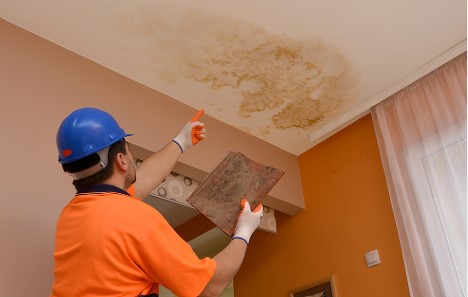
Water damage is one of the most common and destructive issues that property owners face. It can stem from natural disasters, plumbing failures, roof leaks, or appliance malfunctions. Addressing water damage promptly is crucial to prevent further destruction and costly repairs. This guide will walk you through the essentials of water damage repair, helping you restore your property efficiently and safeguard it against future problems.
Identifying Water Damage
The first step in water damage repair is identifying the extent of the damage. Common signs include:
- Stains and Discoloration: Yellowish or brown stains on walls and ceilings often indicate water intrusion.
- Warped Floors and Walls: Water can cause wood and drywall to swell, warp, or buckle.
- Musty Odor: Persistent dampness often leads to unpleasant smells, signaling mold or mildew growth.
- Peeling Paint or Wallpaper: Moisture can cause adhesives to fail, leading to peeling.
- Visible Mold Growth: Mold thrives in damp environments and can appear within 24-48 hours of water exposure.
If you notice these signs, act quickly to minimize damage and repair costs.
Steps in Water Damage Repair
1. Stop the Source of Water
Before beginning repairs, identify and stop the source of water. Common sources include:
- Burst or leaking pipes
- Faulty appliances
- Roof leaks
- Flooding from storms or natural disasters
Turn off the main water supply if necessary and address the root cause to prevent further damage.
2. Assess the Damage
Evaluate the extent of the Water damage. Use moisture meters or thermal imaging cameras to detect hidden water pockets. This step is crucial for planning repairs and estimating costs.
3. Remove Standing Water
Extract standing water using:
- Wet/dry vacuums
- Submersible pumps
- Mops and towels
Ensure all water is removed to prevent mold growth and structural weakening.
4. Dry and Dehumidify
Thoroughly dry the affected area using industrial fans, dehumidifiers, and proper ventilation. Drying is essential to prevent mold and further deterioration.
5. Clean and Sanitize
Clean and disinfect surfaces to eliminate bacteria, mold, and contaminants. Use:
- Antimicrobial solutions
- Bleach (for non-porous surfaces)
- HEPA vacuums for mold spores
6. Repair and Restore
Replace damaged materials like drywall, insulation, and flooring. Repair structural elements and repaint or refinish surfaces as needed. Consider professional restoration services for extensive damage.
Common Challenges in Water Damage Repair
1. Mold Growth
Mold is a significant concern in water-damaged areas. It can spread rapidly, causing health risks and further property damage. Address mold issues promptly by:
- Isolating affected areas
- Using mold remediation products
- Consulting professionals for severe infestations
2. Structural Damage
Severe water damage can compromise a building’s structural integrity. Inspect beams, foundations, and load-bearing walls for signs of weakening, and reinforce or replace as necessary.
3. Hidden Moisture
Water often seeps into hidden areas like behind walls, under floors, or inside ducts. Use moisture detection tools to locate and address hidden moisture effectively.
Preventing Future Water Damage
Prevention is key to avoiding repeated water damage. Implement these measures:
1. Maintain Plumbing Systems
- Inspect pipes regularly for leaks or corrosion.
- Insulate pipes to prevent freezing in cold weather.
- Replace old or damaged plumbing components.
2. Protect Your Roof
- Check for missing or damaged shingles.
- Clean gutters and downspouts to prevent water pooling.
- Install a roof water barrier for added protection.
3. Monitor Appliances
- Regularly inspect water-using appliances like dishwashers, washing machines, and water heaters.
- Replace worn hoses and fittings.
4. Improve Drainage
- Grade your property to direct water away from the foundation.
- Install French drains or sump pumps in areas prone to flooding.
5. Seal Cracks and Gaps
- Use waterproof sealants on foundation cracks.
- Ensure windows and doors are properly sealed to prevent water intrusion.
Hiring Professionals for Water Damage Repair
While some water damage repairs can be DIY, severe cases often require professional intervention. Professionals offer:
- Expertise: Certified technicians assess and address damage comprehensively.
- Specialized Equipment: Industrial-grade tools for drying, cleaning, and restoration.
- Time-Saving: Quick response reduces further damage and speeds up recovery.
- Insurance Assistance: Many professionals help navigate insurance claims.
When choosing a contractor, look for certifications like IICRC (Institute of Inspection, Cleaning, and Restoration Certification) and positive reviews.
Water damage repair is a critical process that requires prompt action and careful attention. From stopping the water source to restoring your property, every step is vital to ensure the safety and longevity of your home or business. By understanding the repair process and implementing preventive measures, you can minimize risks and protect your property from future water damage. Click here